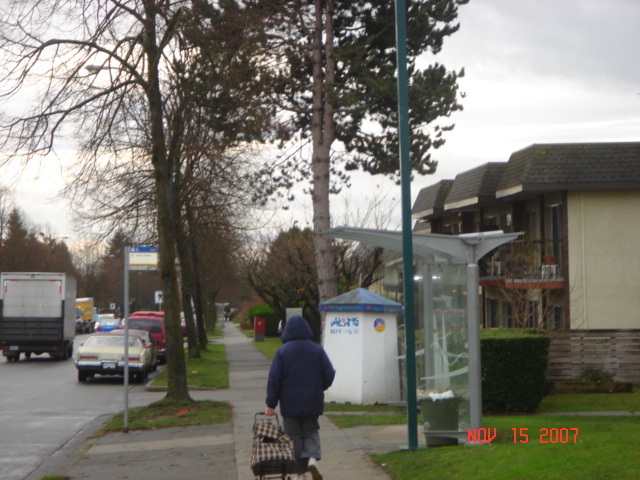
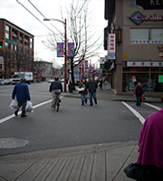
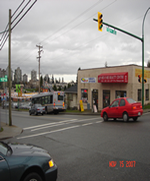
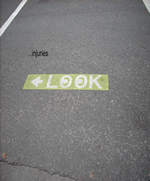
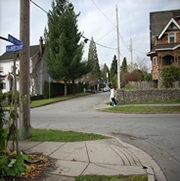
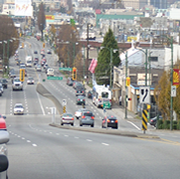
Elements of the Built Environment and Pedestrian-Vehicle Collisions
in Greater Vancouver Regional District:
A GIS Study
INTRODUCTION
Pedestrian injuries are a very under recognized health problem in Canada. From 1992 to 2001 a total of 4162 pedestrians died from injuries suffered in collisions with motor vehicles and 142,515 were injured. ICBC reported 1,825 collisions with pedestrians in 2005 (www.icbc.com). Therefore there is the demand for further research into the causes of pedestrian and motorvehicle collisions.
Research into the causes of pedestrian and motor vehicle collisions is required to increase transportation and pedestrian safety. Previous studies done in major metropolitan areas, such as Los Angeles, London, and Tokyo have focused on a range of factors contributing to pedestrian injury; speed of cars, age of pedestrians, weather conditions, socio-economic status and land use. However, little research has been done on elements of the built environment that increase the risk of pedestrian-motor vehicle incidents in British Columbia.
This project had two parts; first, we located clusters of pedestrian injuries in the Greater Vancouver Regional District using current GIS methods and technologies. Second, we investigated these areas to enumerate elements of the built environment that may contribute to risk. The results of this project will hopefully add to the limited body of knowledge in this area and help city planners improve road safety in Greater Vancouver.
Click on any of the upper tabs to explore the different components of our study.